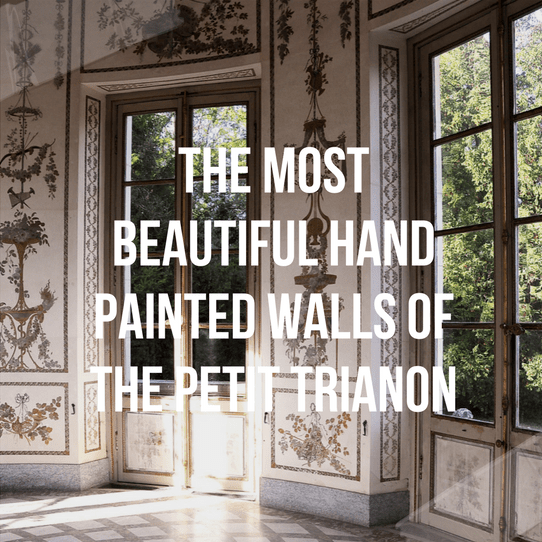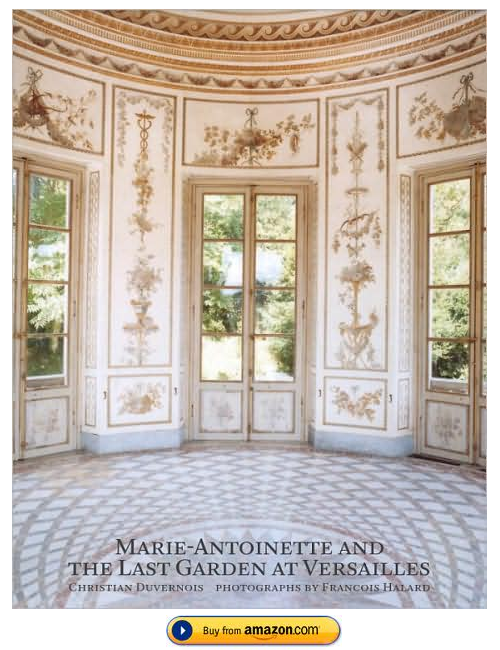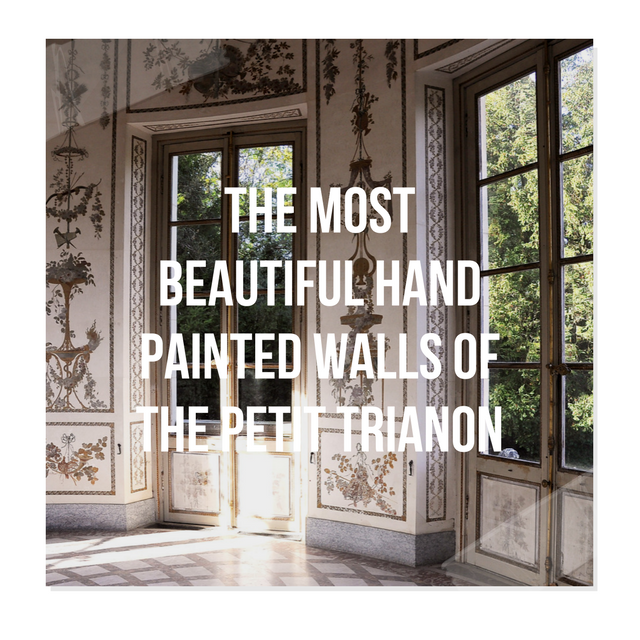
The Belvedere In The Park of the Petit Trianon
The the Petit Trianon was designed by Ange-Jacques Gabriel by the order of Louis XV for his long-term mistress, Madame de Pompadour, and was constructed between 1762 and 1768. But Madame de Pompadour died four years before its completion. Upon his accession to the throne in 1774, the 20-year-old Louis XVI gave the château and its surrounding park to his 19-year-old Queen Marie Antoinette for her exclusive use and enjoyment. Marie longed to escape Louis and his court, and he gave her just the place.
This simple building located just a hundred meters of the palace of the Petit Trianon contains an oval room which was the private theatre of the Queen. It was built in 1780 by the architect Richard Mique. The little theatre features decorative pasteboard sculptures, with blue hangings and a gold-embroidered curtain. The stage is larger than the auditorium. The machinery is original from the period and the decoration is original although has been restored. Marie-Antoinette was always in search of entertainments and who liked to perform on scene.Marie Antoinette would come to the Petit Trianon not only to escape the formality of court life, but also to shake off the burden of her royal responsibilities. At Versailles, she was under considerable pressure and judgement from both her family and the court, and the Petit Trianon was her place of ease and leisure where she could rest from those trials.
Since the Petit Trianon was by invitation only, none was permitted to enter the property without the Queen’s express permission. It was said, not even Louis XVI, so you can imagine how many people felt left out, or perhaps excluded if they were not invited. This invitation only alienated the court nobility, and only the queen’s “inner circle” were invited.
A house was designed to require as little interaction between guests and servants as possible. To that end, the table in was designed to be mechanically lowered and raised through the floorboards so that the servants below were left sight unseen.
Consider stenciling your home with the classic stylings of a white background with Neoclassical motifs seen at the Petit Trianon. One very easy way of getting these pictures on the wall is by using an overhead projector. Books such as French Architectural Ornament details many of the motifs from Versailles, Fontainebleau and other Palaces which you can get transferred onto overhead projector paper at your local copy center.
Marie-Antoinette and the Last Garden at Versailles by Christain Duvernois, with photographs by François Halard.
Here is the publisher’s presentation:
Marie-Antoinette has been idolized as the height of eighteenth-century French style and vilified as the spark that ignited the French Revolution. This book departs from such traditional interpretations of the infamous queen’s reign and chooses to reflect on the humanistic aspects of her private realm.
To escape the formalities and royal obligations of Louis XVI’s court, Marie-Antoinette created a private realm of pleasure for herself at the Petit Trianon and Hameau, where she planted the first Anglo-Chinese garden; created a trysting grotto; a working farm; and revolutionized architecture and gardening trends for the century to come.
Marie-Antoinette’s entire private domain and its story are told in beautiful photographic detail by François Halard for the first time since its recent restoration and accompanied by well-researched texts by garden expert Christian Duvernois

Habitually Chic featured stunning photos of Belvedere in the park of the Petit Trianon, and shows the transition from the dominant Rococo style of the earlier part of the 18th century, to the more sober and refined, Neoclassical style of the 1760s and onward.
Curt Dude on Flicker gives us an entirely different view of the Belvedere
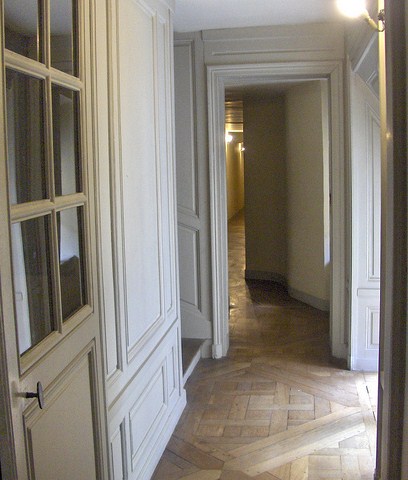

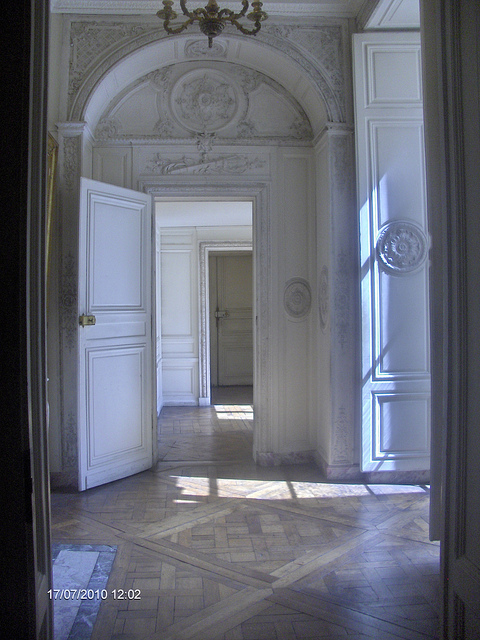
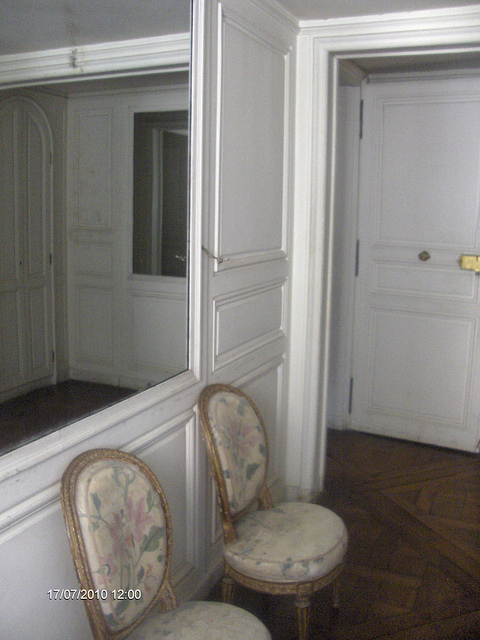
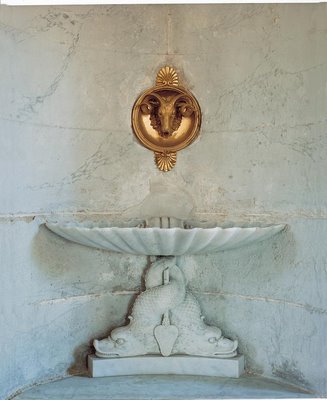
Fountain Picture Above From Peak of Chic Blog


Here is a close up of one of the original chairs. Bonnefoy du Plan oversaw the creation of the furniture pieces which featured carved and painted trellises, basketwork, floral forms and rustic garlands. The furniture is called “wheat-ear” furniture, so named for lily-of-the-valley, pine cones, and ears of wheat found in the design The third floor is known as the Mezzanine and was for the Queen’s staff. The room reminds me of classic Swedish Style. You can hardly see the picture because it is blury, but you see the wall coverings match the drapes. The Louis XVI furniture is known as the basis to much of the Gustavian style. These lovely pictures are from Metis Linens Blog
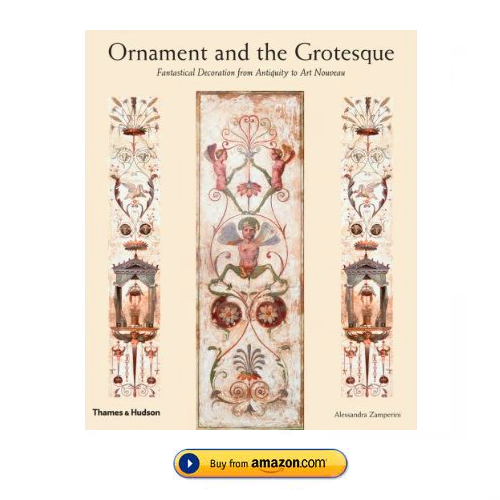
In the fifteenth century, the ruins of Nero’s Domus Aurea were discovered in Rome. The first explorers to enter the interior of this spectacular palace complex had the sensation of finding themselves in a series of grottoes, and this is why the fanciful frescoes and floor mosaics discovered there were called “grotesques.” A fashionable form of ornamentation in ancient Rome, grotesques consist of loosely connected motifs, often incorporating human figures, birds, animals, and arranged around medallions filled with painted scenes. Fifteenth-century artists such as Perugino, Signorelli, Filippino Lippi, Mantegna copied the ancient Roman examples; the most famous use of the style was Raphael’s Loggie in the Vatican Palace, which became immensely famous and influential all over Europe. This magnificently illustrated book covers the entire history of the grotesque in European art, from its Roman origins through the Renaissance to the late nineteenth century. It illuminates how grotesque decoration was transformed in the seventeenth and eighteenth centuries into arabesque, chinoiserie, and singeries, and how it continued in the nineteenth century, leading eventually to Art Nouveau. 250 color illustrations.

